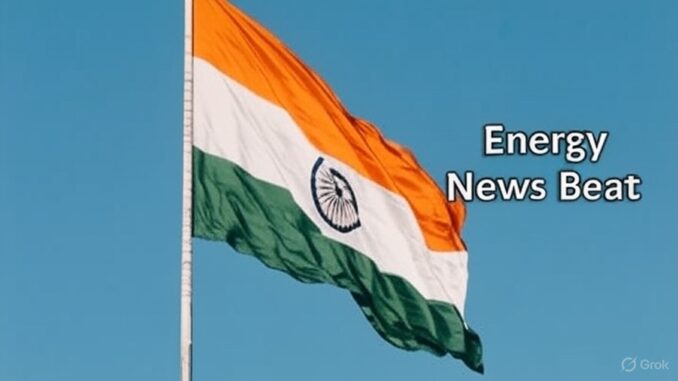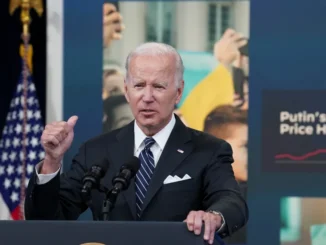
In the evolving landscape of global energy geopolitics, India is pushing back against Western pressures with a compelling economic narrative. As the United States and European Union intensify sanctions on nations engaging with Russian energy exports, India has emerged as a key player, ramping up its imports of discounted Russian crude oil and other commodities. This shift not only bolsters India’s energy security but also exposes what New Delhi views as inconsistencies in Western policies. By highlighting data on trade volumes, savings, and the West’s own continued dealings with Russia, India is challenging the narrative that its ties with Moscow undermine global efforts to isolate Russia amid the Ukraine conflict.
India’s Surging Trade with Russia: A Strategic PivotIndia’s economic relationship with Russia has transformed dramatically since the onset of the Ukraine war in 2022. What began as a modest partnership has ballooned into a multibillion-dollar lifeline for both nations. In 2024, India’s imports from Russia reached a staggering $65.7 billion, up from just $8.25 billion in 2021. The lion’s share—$52.2 billion—came from crude oil, a massive leap from $2.31 billion three years prior. Coal and related products added $3.5 billion, while fertilizers contributed $1.67 billion.
Are you from California or New York and need a tax break?
This surge reflects India’s pragmatic approach: capitalizing on discounted Russian energy to fuel its growing economy while navigating Western sanctions. Russian crude now constitutes about a third of India’s total oil imports, compared to a mere 2% before the invasion.
This has allowed Indian refiners to process and re-export products like diesel to markets including Europe and even the United States. Prior to recent tighter measures, up to 40% of Europe’s diesel needs were met by Indian refineries using Russian crude, with some ending up in California.
India’s “math” here is straightforward: lower input costs translate to competitive exports and domestic energy stability, saving billions in procurement expenses amid volatile global prices.
Western Hypocrisy: The EU’s Lingering Ties with Russia
India’s counterargument gains traction when scrutinizing the West’s own trade data. Despite vocal criticism and sanctions aimed at crippling Russia’s economy, the European Union has increased its imports of Russian liquefied natural gas (LNG) by 9% since 2022, reaching record levels of 17.8 million tonnes in 2024.
Overall, EU imports from Russia have dropped 86% since the war began, with first-quarter 2025 figures at 8.74 billion euros ($10.11 billion), down from 30.58 billion euros in the same period of 2021. Yet, key commodities persist: Russian oil imports stood at 1.48 billion euros in Q1 2025, natural gas (including LNG) accounts for about 17% of the EU’s total (down from 48%), and fertilizers make up 25.62% of imports (slightly down from 28.15%).
The United States mirrors this selective engagement. U.S. imports from Russia fell to $2.5 billion in the first half of 2025 from $14.14 billion four years earlier, but fertilizers ($1.27 billion in 2024), enriched uranium and plutonium ($624 million), and palladium ($878 million) remain significant.
India points to these figures as evidence of double standards: while the West lectures on isolating Russia, it continues to buy what it needs, undermining the moral high ground’
Trump’s Tariffs: A Direct Challenge to India’s Strategy
Tensions escalated when U.S. President Donald Trump imposed an additional 25% tariff on Indian goods, effective within 21 days, bringing the total to 50%. This move, part of broader tariffs on over 90 countries, targets India’s Russian crude ties, which Trump accuses of “fueling the war machine.”
The tariffs follow failed U.S.-Russia talks on Ukraine and aim to pressure nations like India to reduce reliance on Moscow.Analysts warn of ripple effects. Indian refiners, such as the Rosneft-part-owned Nayara Energy (already hit by EU sanctions), may cut run rates or shift to U.S. crude to negotiate relief.
If India fully replaces Russian barrels, it could boost demand for younger tankers, as over 58% of Russian crude to India in the first half of 2023 used vessels 18 years or older, up from 10% in 2021.
The “grey tanker fleet” has grown by about 30 vessels monthly in 2025, potentially going “dark” to evade sanctions.
Comparisons to other Russian crude buyers—China, Brazil, and Turkey—highlight the stakes: their exports to the U.S. far outweigh those to Russia, making appeasement tempting, though China is unlikely to yield.
The EU’s Trillion-Euro Blunder: Self-Inflicted Wounds
India’s challenge extends to the EU’s own miscalculations. Russian Deputy Foreign Minister Alexander Grushko estimates that the EU’s severance of energy ties with Russia has cost over 1 trillion euros ($1.16 trillion), primarily from halting natural gas purchases.
This has triggered a 24% rise in corporate insolvencies in 2023 over 2022, with an 11-12% increase attributed to soaring energy prices and deindustrialization affecting eight gas-dependent EU countries.
In contrast, Russia’s economy has shown resilience: after a 2022 dip, GDP grew in 2023 and is projected to rise further in 2024, buoyed by alternative markets like India.
Experts, including Stuart Turley, argue that Trump’s tariffs on India are misguided and could backfire, harming U.S. interests while India adapts.
Conclusion: Redefining Global Energy Dynamics
India’s “own math” on Russian trade—rooted in hard data on savings, trade surges, and Western inconsistencies—presents a formidable challenge to the U.S. and EU. As sanctions evolve, the global energy market faces uncertainty: will India pivot further, or will the West reconsider its approach? The numbers suggest that isolating Russia entirely remains elusive, with unintended consequences like the EU’s trillion-euro loss underscoring the high cost of geopolitical brinkmanship. For energy stakeholders, this saga highlights the need for balanced strategies in an interconnected world.
Is Oil & Gas Right for Your Portfolio?
Crude Oil, LNG, Jet Fuel price quote
ENB Top News
ENB
Energy Dashboard
ENB Podcast
ENB Substack






